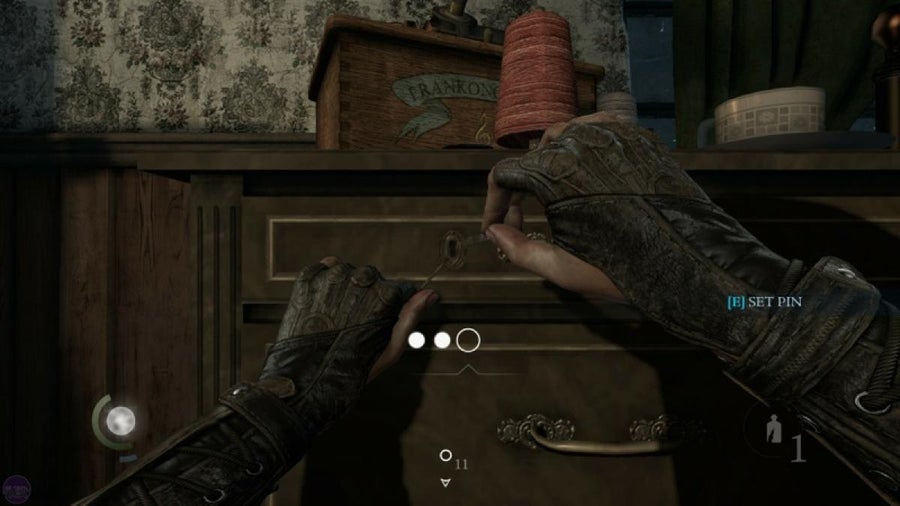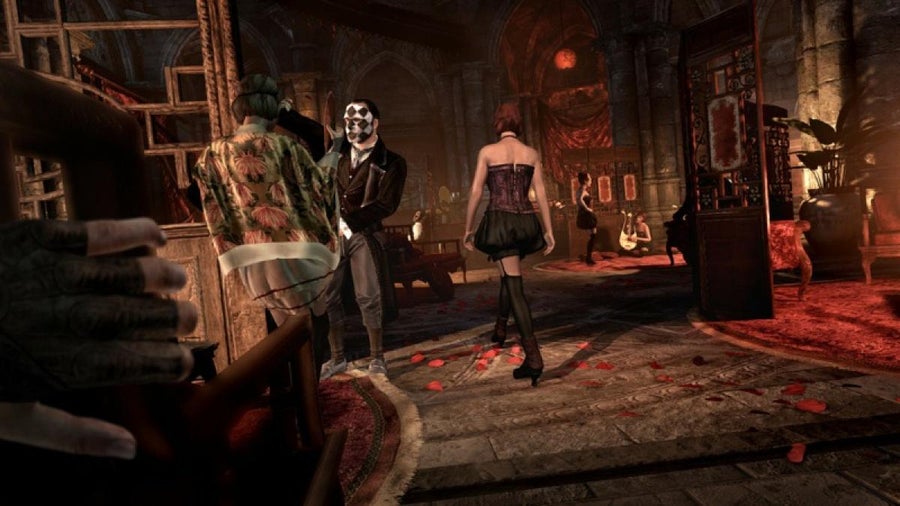Thief review
Fantastically atmospheric in places, but will otherwise feel like a dumbed down experience for fans of the series
The gloomy 19th century metropolis known only as the City is perpetually bathed in shadow, making it the ideal home for Garrett, the titular thief of Eidos’ long-running stealth series. Heavily inspired by Victorian London, with a healthy dose of steampunk thrown in for good measure, its dingy alleyways and back streets aren’t particularly welcoming at the best of times, but on returning for the first time in years, Garrett discovers things have deteriorated even further: the City is under the grip of plague and governed by a ruthless overlord, although there’s still plenty of loot for an enterprising thief to acquire.

Naturally Garrett has one eye on profit at all times – no matter what your current objective may be, there’s always more loot to be collected. You can steal pretty much anything that isn’t nailed down, although for a city supposedly overflowing with the homeless and destitute, there’s an awful lot of gold, antiques and jewellery lying unprotected in the street. Garrett also seems to have bottomless pockets, with enough room for more candlesticks, goblets and decorative plates than one person should be able to carry, let alone do so silently.
These items don’t need to be fenced; they are instantly converted into gold, saving you the hassle of back tracking just to empty your inventory or make room for more gear. The cash earned must be used to upgrade your equipment, which in turn unlock new routes through the city.
Finding loot is already fairly simple from the outset, as everything worth stealing has a slight shimmer when you get close to it, but Focus Mode lights up important objects like a Christmas tree. It acts a little like night vision, highlighting important characters and objects in a luminous blue colour. It only takes a second to survey a room and locate the treasure, hidden panels or interactive objects inside, so uncovering rare spoils rarely feels like a challenge or achievement. This wouldn’t be so bad if this ability was a limited commodity, but despite draining a focus meter every time it is used, you can still use it for a few seconds when the bar has drained completely. There is an option to disable it altogether, which we would recommend to series veterans before starting the game – it preserves some of the challenge of the originals, forcing you to scour every new location for items and gold. Sometimes locks will stand in your way, but the incredibly basic lock picking mini game is monotonous and never poses a challenge – it simply slows the pace of your loot gathering even further.

The stealing mechanics also highlight one of the game’s biggest weaknesses: sporadic AI. The computer controlled guard patrolling a jewellery store didn’t even blink when we’d managed to empty every cabinet in the place, right under his nose. As long as you’re in the shadows, guards are completely oblivious to your presence, even when standing just a few feet away. Opening doors directly into their line of sight isn’t even enough to trigger an alert, as long as the doorway itself isn’t lit by a torch or lantern, and nor will leaving safe doors or locked cabinets wide open.

With only a few key tools to distract guards or make your escape, you spend most of your time in the shadows, inching forward and occasionally darting out into the light to extinguish candles or swoop across corridors and back into the darkness. This slows the pace of the game down considerably, only picking up speed during the heavily scripted mission end sequences which could see you escaping a burning building, or evading capture from the pursuing city watch.
The main plot is split into various heists, with an overarching story loosely connecting them together. The clock tower Garrett calls home acts as a central hub, from which you head out into different parts of the city for each job. The dark city streets that connect each location quickly lose their charm, feeling all too repetitive and familiar, but the unique locations they lead to have ben lavished with incidental detail. Unfortunately they are easy to miss: you’ll need to actively seek out these places by accepting the numerous optional side missions, as simply ploughing through with the main story will only reveal a small part of the whole city.
It’s such a shame that the freeform approach seen in previous Thief games is largely missing here. There are one or two alternate approaches to most missions, but they are otherwise incredibly rigid; once you’ve tried one path, there’s very little reason to attempt it again differently as they all feel so similar. The omnipresent waypoint marker always points you in the right direction, essentially discouraging exploration by continuously telling you when you’re going in the wrong direction. Again it’s possible to disable this, which we would wholeheartedly recommend.

There are many similarities to 2012’s Dishonored; both games have a heavy focus on stealth and are set in a steampunk city suffering from a mysterious plague, under the command of a ruthless dictator. Unfortunately for Thief, Dishonored has a much greater sense of pace. Corvo’s powers create a flow of movement and open up gameplay options in a way that Garrett’s water arrows and noise makers simply can’t match.
Thief is by no means a bad game, with small flickers of excellence in the location designs, but we would hesitate to call it a worthy continuation of the series legacy. Once you dig down into the gameplay menus and turn off the hint systems, there’s still a lot of what made the original games so compelling, but the overly simplified mechanics make for a diluted Thief experience.
Details | |
|---|---|
| Price | £16 |
| Details | www.thiefgame.com |
| Rating | *** |










